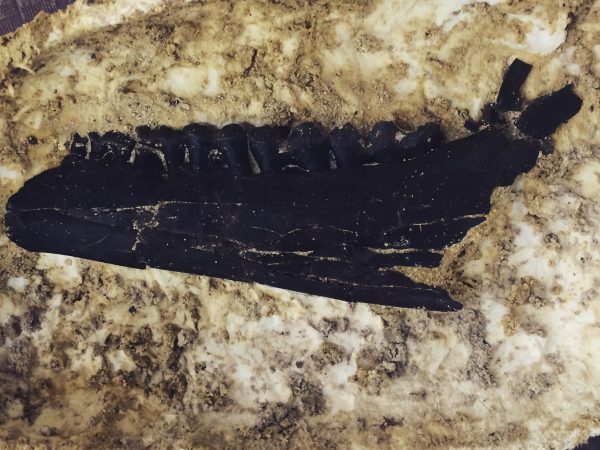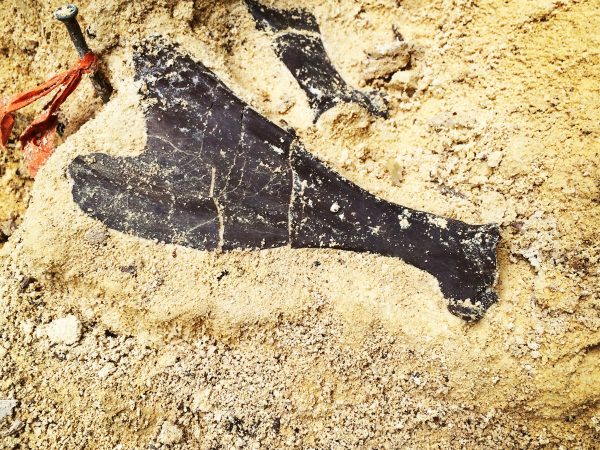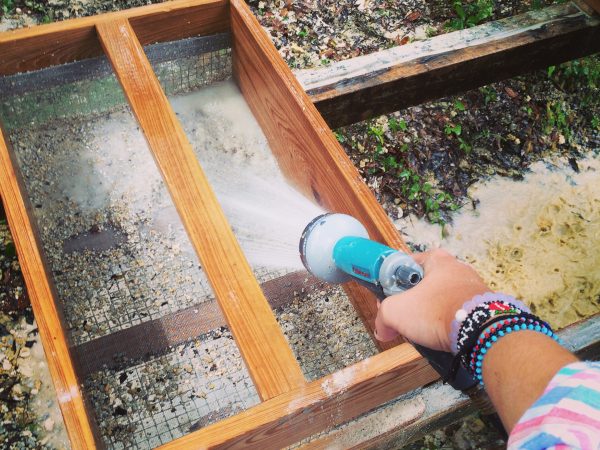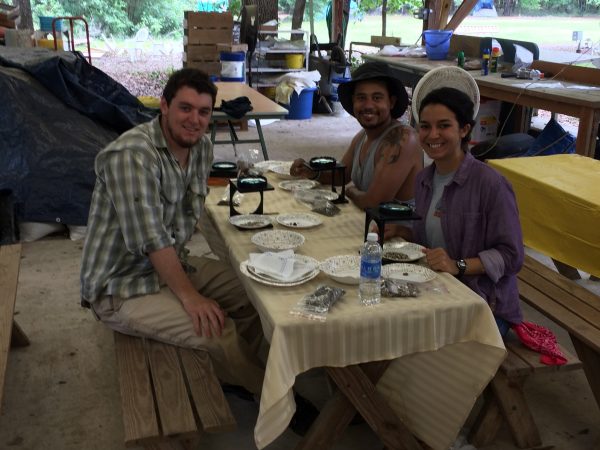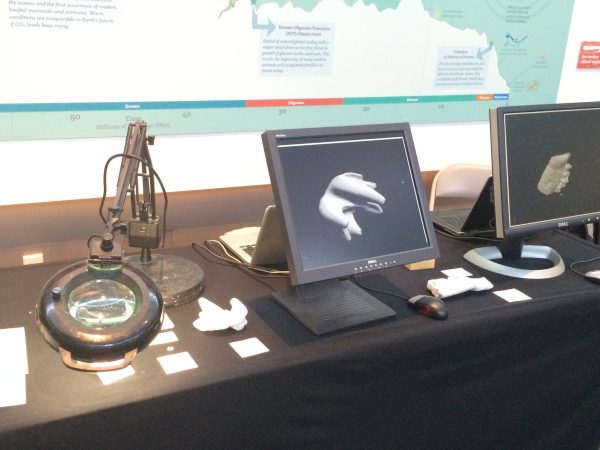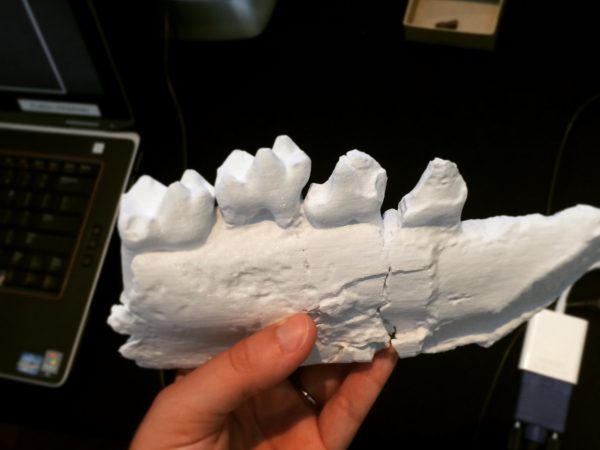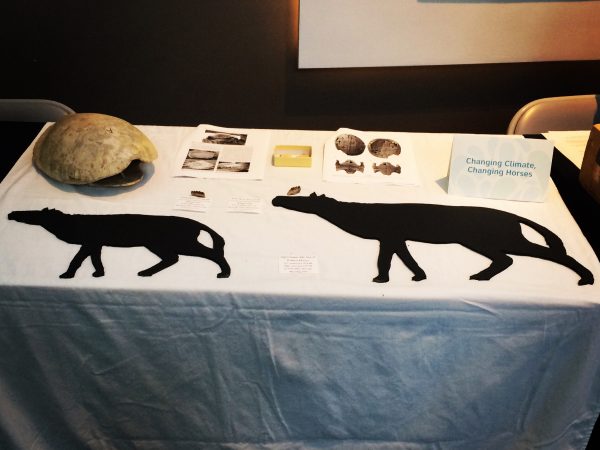Last week myself and the other interns took a field trip for two days to dig at the fossil site Thomas Farm, about an hour away from the museum here in Gainesville. The Thomas Farm site is from a comparable time frame (early Miocene) to our localities in Panama, and similarities in the fauna we find at each site show a biogeographic connection. Some examples of taxa that are in common are Parahippus, Floridatragulus, and Petauristodon.
Once at the site, we were given an introduction by Dr. Richard Hulbert. He told us that it used to be a large sinkhole, with some limestone caves. We talked about the sediment we would encounter and the types of fossils we would be finding. At Thomas Farm, they dig in 10 cm intervals, using a grid system to denote different squares. This is similar to how archaeological digs are done. Much of my fieldwork training comes from archaeological work, so I was very familiar with this and felt very comfortable digging this way. Various fossils were uncovered, and I even got to make my first jacket, which was for a mandible belonging to the camel Nothokemas.
At Thomas Farm I also got training in screen-washing and matrix picking, by Art Poyer. Screenwashing proved to be extremely fun and very messy. Once dried completely, we picked through the matrix and found various bones, most belonging to frogs, bats, and rodents.
On Saturday I also participated in the Earth Day event at the museum. I worked at the PETM (Paleocene-Eocene Thermal Maximum) table. Two graduate students, Natasha Vitek and Paul Morse worked hard setting up the table, and it was a huge success. We had a section where we described the work that the museum has been doing with CT-scanning and 3D-printing fossils, a section which described the first horses and how their body size was affected by a changing climate, and a mural of the fauna that would have lived in Wyoming ~55 Ma. I especially enjoy teaching the public about the work the museum is doing, so this was a great event for me and I am grateful to have been involved!
 The portion of the table where we talked about our work with CT-scanning and 3D-printing fossils.
The portion of the table where we talked about our work with CT-scanning and 3D-printing fossils. A 3D print of a Cantius specimen, an adapiform primate.
A 3D print of a Cantius specimen, an adapiform primate. The portion of the table where we talked about how the body size of the earliest horses was affected by climate change, and where Jason Bourque talked about a turtle taxon that lived in Wyoming only during the PETM.
The portion of the table where we talked about how the body size of the earliest horses was affected by climate change, and where Jason Bourque talked about a turtle taxon that lived in Wyoming only during the PETM.
